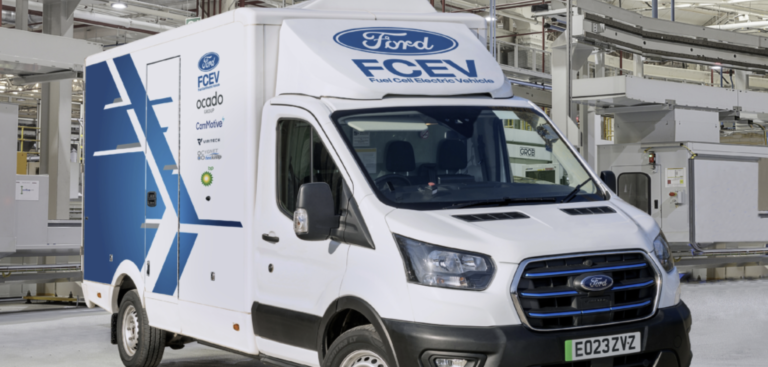Haydale has revealed that it will support Viritech’s development of fuel cell hydrogen electric vehicles (FCHEVs) following the announcement earlier this month that Viritech will take part in Ford’s three-year hydrogen fuel cell E-Transit trial (link to this: Ford to undertake hydrogen fuel cell E-Transit trial | Automotive Powertrain Technology International)
During this project, Viritech will develop hydrogen pressure vessels which use its integrated mounting system to reduce both the cost and weight of fitting hydrogen pressure vessels to vehicles. The Graph-Pro mounting system integrates the mountings into the structure of the pressure vessel, enabling it to be bolted straight to the chassis.
Alongside the development of the hydrogen pressure vessels for the E-Transit project, Viritech will also lead the development Type 5 hydrogen pressure vessels. At present, this type of vessel is not commercially available but is said to offer the possibility of further weight savings through the removal of the inner tank liner – a design element used on conventional vessels to stop leakage.
Haydale will lead the development of new functionalized materials and resins for Type 5 pressure vessels to support Viritech’s Graph-Pro system. Furthermore, Haydale will use graphene-enhanced carbon fiber material to develop impermeable pressure vessels.
Ford plans to test Viritech’s Tri-Volt hydrogen powertrain ecosystem, which uses fuel cells to charge batteries to extend range. During normal driving speeds, the fuel cell will be used as the main form of propulsion, while extremely small, high C-rate batteries are used to manage power when pulling away from a complete stop or under braking. The high C-rate batteries are capable of producing a significant amount of power for short periods compared to traditional automotive batteries, with a 6kWh battery pack able to produce up to 600kW for 20-30 seconds.
Viritech’s hydrogen powertrain ecosystem consists of hardware and software and includes an ultra-high-performance DC-DC convertor with an HV bus to connect the fuel cell, battery pack and traction motor.


